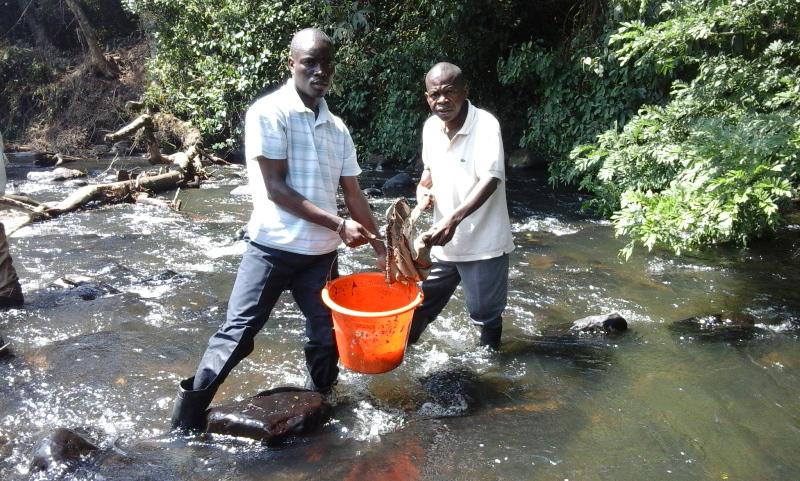Francois Ngera Mwangi
To generate knowledge of mayfly and caddisfly associated to water quality, their taxonomy and diversity, and to help researchers to build capacity in stream ecology and assessment.

Knowledge of the taxonomy and ecology of the species of water insects has proven valuable in biomonitoring programs, because of the very different susceptibility of the various species to pollutants and other types of environmental disturbance. Mayflies and caddisflies and stoneflies are considered primary indicators in the monitoring of water quality.
This project intends to develop and establish collections as well as a taxonomic basis for mayfly and caddisfly identification, and thereby a sound foundation for aquatic biomonitoring. Studies will be carried out at specific sites in the western Albertine Rift to provide the basis for present day species numbers associated with the region. The rivers and streams evaluated during the 1950s-1980s will be reinvestigated to evaluate the changes in catchment structure and land use impacts. The sampling sites will be selected in forest, agricultural and human settlement areas. At each sampling site, microhabitat and catchment conditions will be recorded. Geographic coordinates based on GPS will be noted to locate and identify sites and watercourses. At each watercourse site, geographic coordinates will be noted using GPS and physico-chemical parameters such as temperature, pH, dissolved oxygen, TDS, nutrients concentration and water flow will be recorded. Adult mayfly and caddisfly will be collected using standard light trapping methods and emergence traps. Larvae will be collected by kick-sampling with a D-frame net (with 150µm mesh) and hand picking will be done for quality specimens. Samples will be preserved in 70 to 95 % ethanol. Adult caddisfly and larvae will be identified using dichotomous keys. The specimens will be described using the morphological terminology according to literature. To distinguish species and associate larvae to adults, DNA will be extracted. This method based on DNA extraction will help to determine the diversity and to associate larvae with adults to contribute to the identification of each species collected in the region.